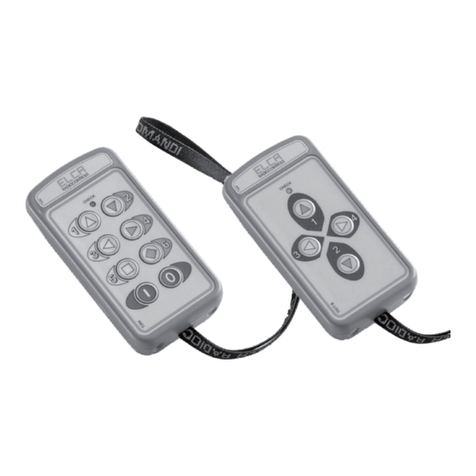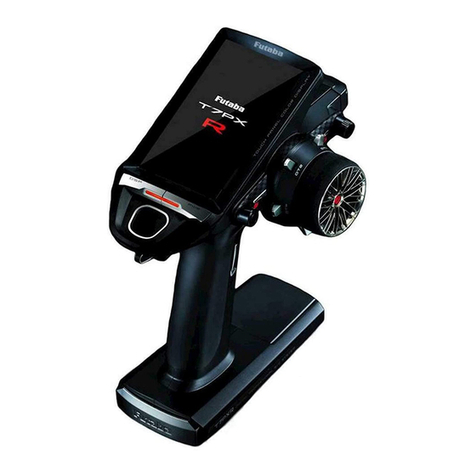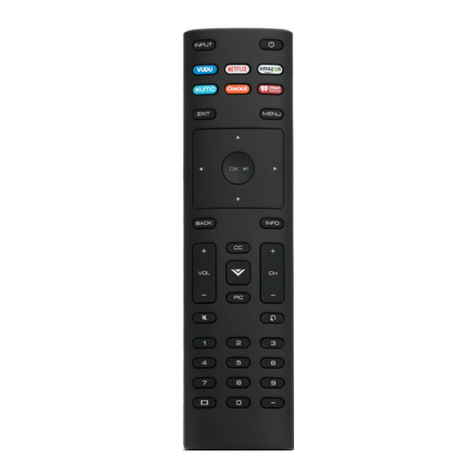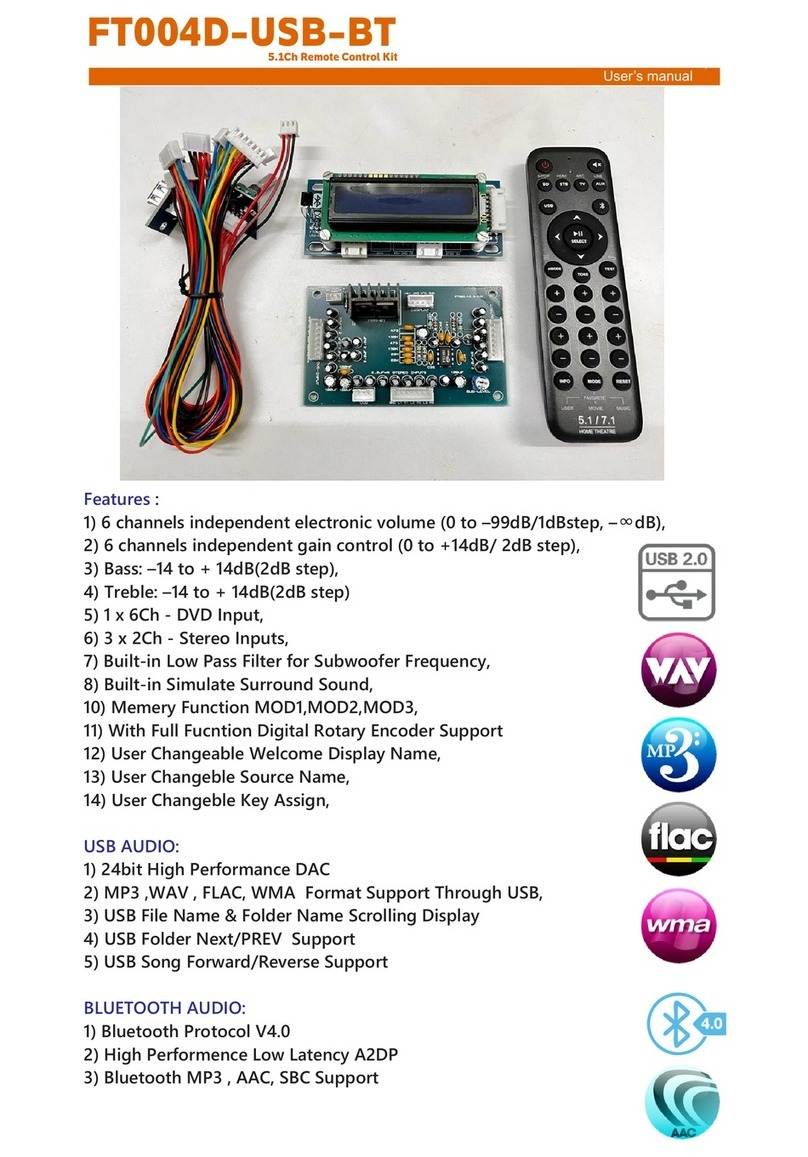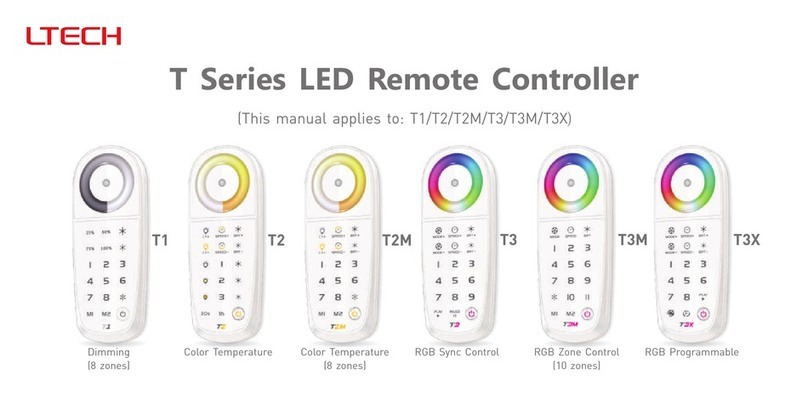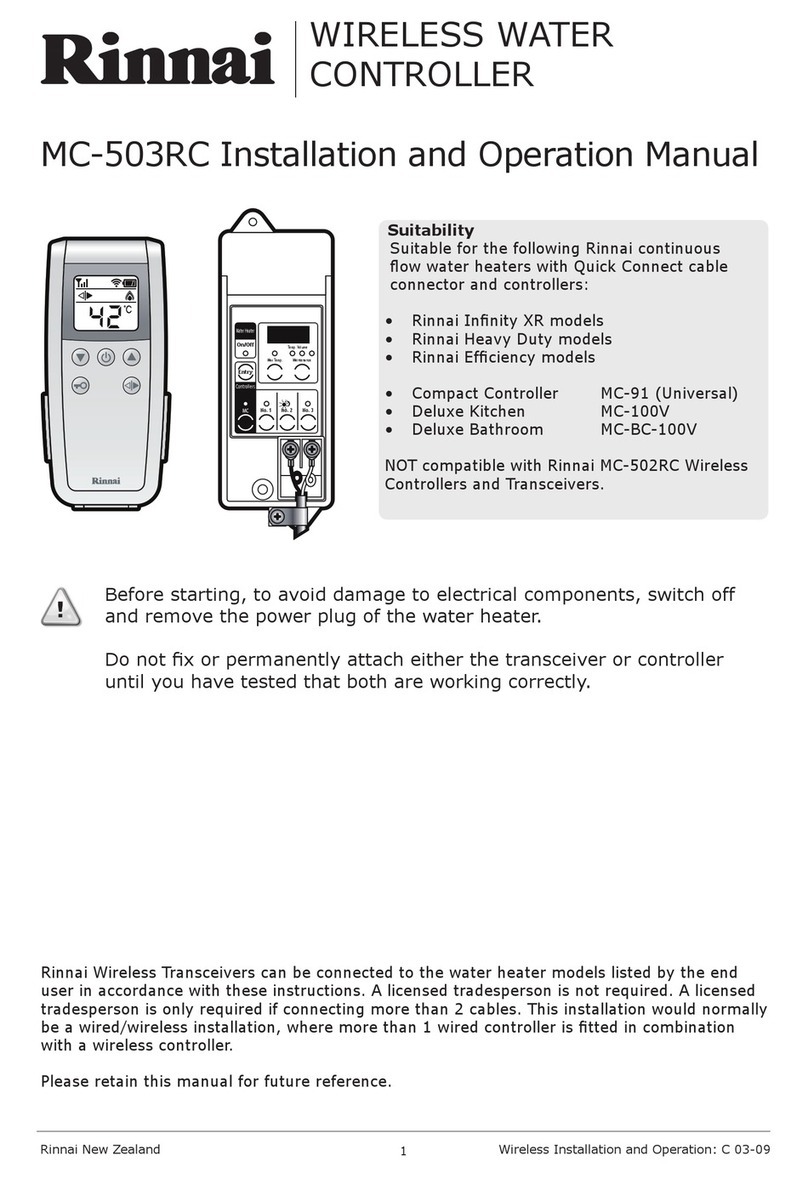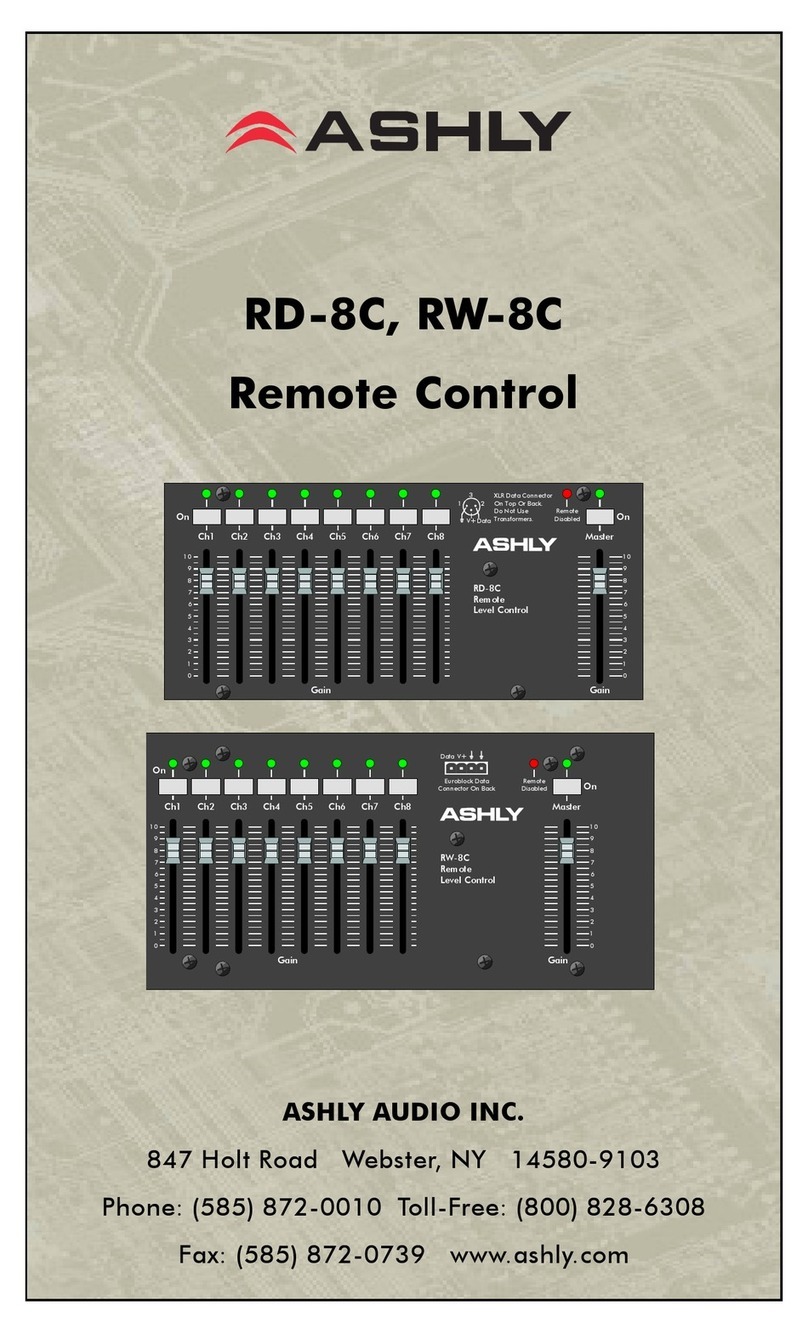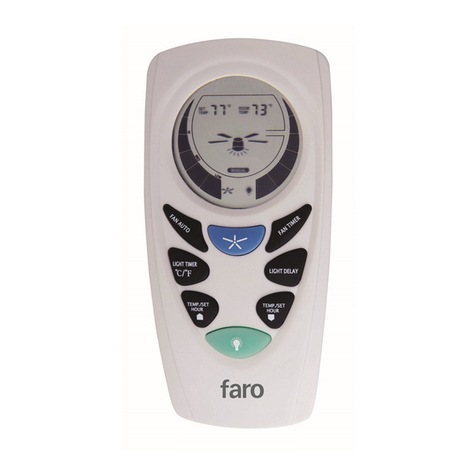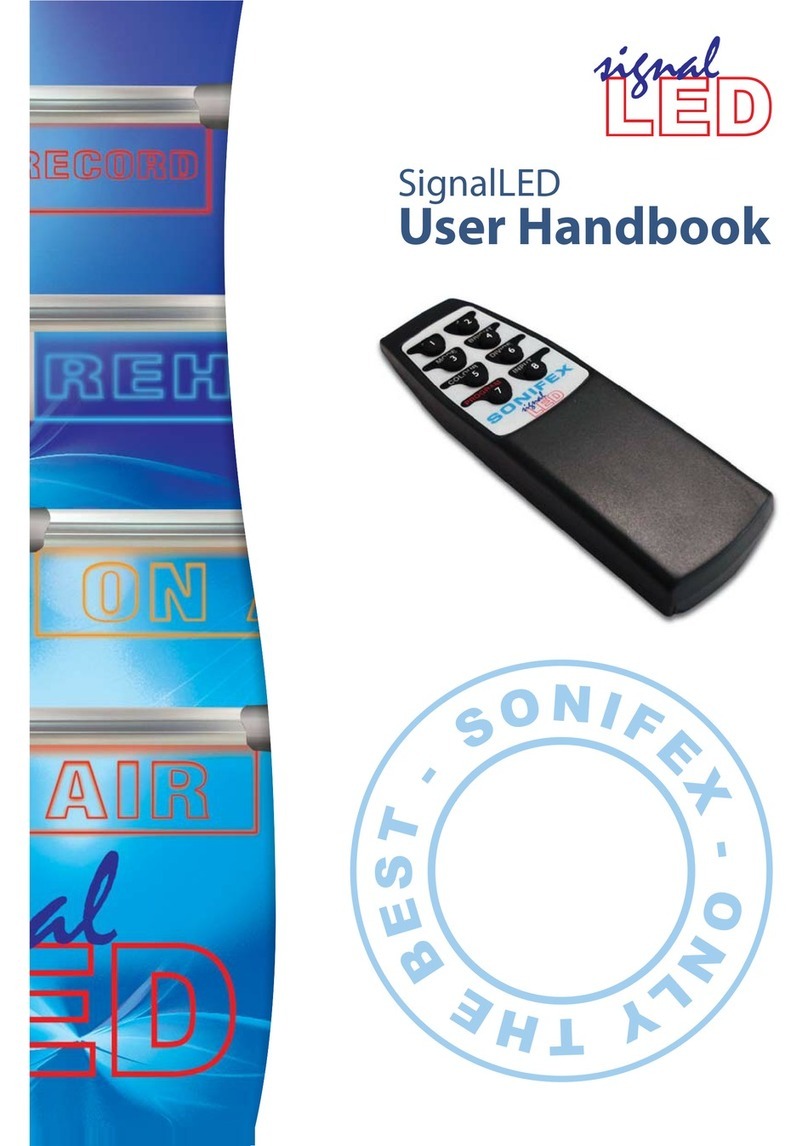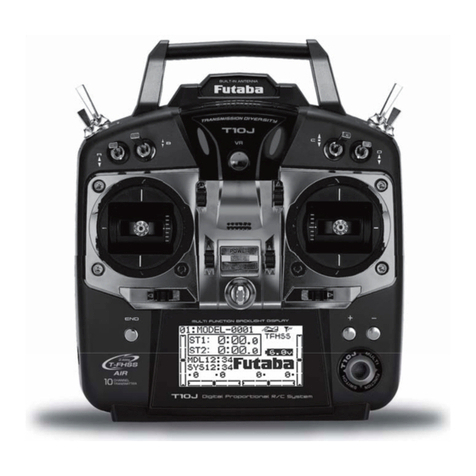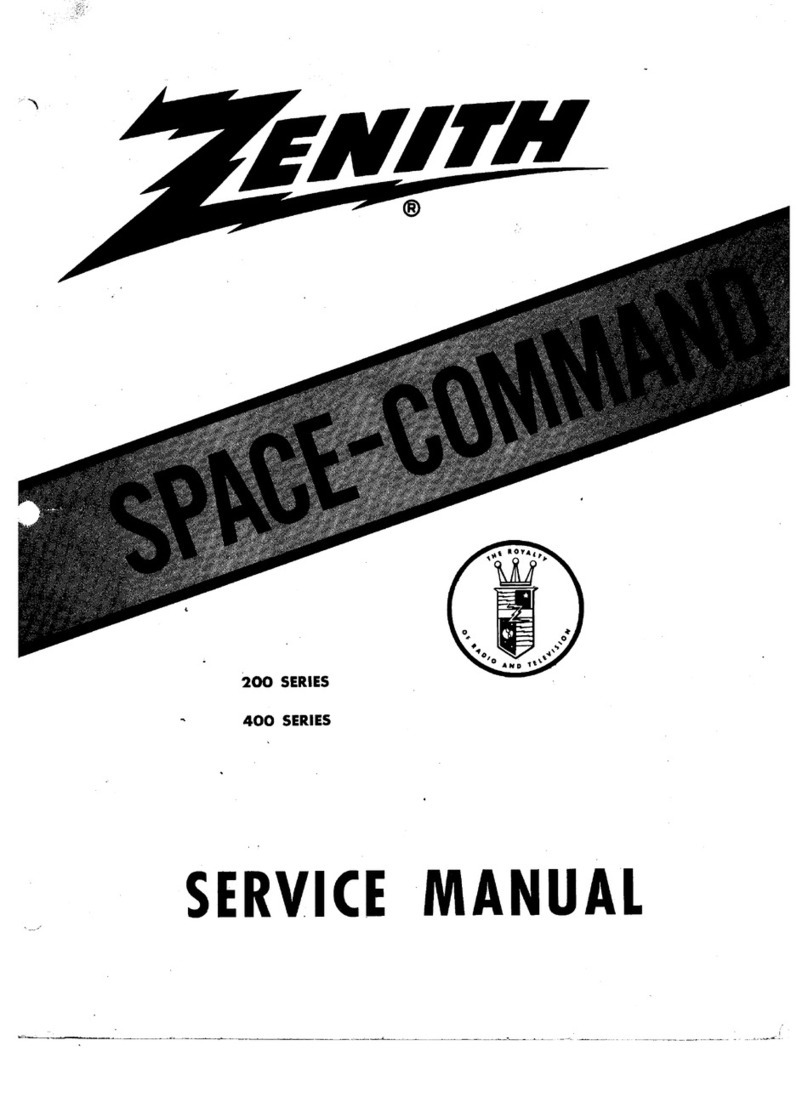Pribusin RCI-200 series User manual

Manufacturers of Process
Controls and Instrumentation
Instruction Manual
Model:
Serial #:
Power:
Function:
XXX=MDM Modem Dial-Up
Communication:
RCI-200-XXX
(If special or required)
24 VDC
2 “Dry” Contacts and 2 Analog Inputs
Input:
Remote Control Signal Interface
XXX=SER: RS-232/485
Output: 2 Form ‘C’ Contacts and 2 Analog Outputs
117VAC, 50/60Hz
XXX=RF9: 900 Mhz Wireless
XXX=FSK: Leased Line
XXX=R : 2.4 Ghz WirelessF2
For Technical Assistance And Questions Call
USA: (231) 788-2900 CANADA: (905) 660-5336

Restocking Policy
Page v
Warranty Policy
All product returned to Pribusin Inc. in prime condition (not
damaged, scratched or defaced in any way) within seven (7)
months from the original date of shipment is subject to a 50%
restocking charge. All product must be accompanied by a
Return Authorization number (RA number) which must be
obtained from Pribusin Inc. prior to returning any product.
After seven (7) months from the original date of shipment,
products cannot be returned for restocking.
Custom designed products, modified products or all non-
standard products may not be returned for restocking.
Pribusin Inc. warrants equipment of its own manufacture to be
free from defects in material and workmanship, under normal
conditions of use and service, and will replace any component
found to be defective, on its return to Pribusin Inc.,
transportation charges prepaid, within one year of its original
purchase. Pribusin Inc. will extend the same warranty
protection on equipment, peripherals and accessories which is
extended to Pribusin Inc. by the original manufacturer. Pribusin
Inc. also assumes noliability, expressed or implied, beyond its
obligation to prelace any component involved. Such warranty
is in lieu of all other warranties, expressed or implied.

Function:
The RCI-200-RF9 is a bi-directional data communication
system that exchanges the status of 2 dry contact inputs
and 2 analog inputs between a master and one or more
remote units. A basic system consists of one master
station and one remote station each with 2 dry contact
and 2 analog inputs and 2 'C' relay contact and analog
outputs. All signals are bi-directional so that data may be
read from the remote station and sent to it.
The license-free spread-spectrum radio technology
allows small systems to be set up with very little effort and
at low cost. The technology ensures high
communication reliability even in RF-intensive
environments.
Antennas, such as directional Yagi or Patch antennas,
are sold separately.
Options:
-A: 24VDC Power
- B: 240VAC Power
- N12: NEMA12 Enclosure
Standard Features:
Bi-directional Communication using License-free
900MHz Radio Band
Spread-Spectrum Radio Technology Provides
Reliable Communication
2 Dry Contact and 2 Analog Inputs
2 'C' Relay Contacts and 2 Analog Outputs
Point-to-Point or Host-to-Multipoint Topologies
No Calibration Required
Microprocessor Controlled for High Accuracy
Power: 117 VAC 50/60 Hz (Optional 24 VDC)
High Noise Rejection
Re-Transmission & Error Correction Algorithms
ensure Accurate Data Transmission
Model: RCI-200-RF9
Remote Control Signal Interface
With 900MHz Radio Frequency Link
Page J17
Manufacturers of Process
Controls and Instrumentation
Specifications:
Media: 900MHz Spread-Spectrum Radio
Range: up to 1500ft indoors with omnidirectional antenna
up to 12 miles line-of-sight with directional antenna
Protocol: MODBUS ASCII, 9600 BAUD
RF Connector: N-Female (Bottom of Enclosure)
Radio Power Output: 100mW, 1W (selectable)
Operating Temperature: -4°F to +140°F (-20°C to +60°C)
Relay Contacts: 10A 1/8Hp @ 125VAC
6A 1/8Hp @ 277VAC
Power: 117 VAC, 60/50 Hz, 24VDC Available
Enclosure: NEMA4X (NEMA12 available as an option)
Approvals: ETL 3118354:
UL 60950-1-2007; CSA-C22.2 No. 60950-1-07
3118354

Enclosures & Dimensions:
RCI-200-RF9
Manufactured By:
Page J17
Connection:
System A
System B
2 Analog
2 Contact
2 Analog
2 Contact
2 Analog
2 Contact 2 Analog
2 Contact
Point-to-Point
2 Analog
2 Contact 2 Analog
2 Contact
OR
Master
Remote 1
2 Analog
2 Contact
2 Analog
2 Contact
Remote 2
Remote 3
Master to Multi-Remote
2 Analog
2 Contact
2 Analog
2 Contact 2 Analog
2 Contact
2 Analog
2 Contact
11.25”
9.25” 4.5”
www.pribusin.com
CANADA:
Pribusin Inc.
101 Freshway Dr. Unit 57
Concord, Ontario, L4K 1R9
Ph: (905) 660-5336
Fx: (905) 660-4068
USA:
Pribusin Inc.
743 Marquette Ave.
Muskegon, MI 49442
Ph: (231) 788-2900
Fx: (231) 788-2929
Rev.B Subject to change without notice



..\Manuals\RCI-200-RF9 rev.H.doc Page 1 of 14
RCI-200 Connections:
The RCI-200 is the main board of an RCI-200-XXX Telemetry system. It provides the input and output
signal connections as well as the power supply for the unit. A separate communications board is
added to the RCI-200 to allow it to communicate with other units. This communications board may
have its own configuration that is in a separate section of this manual. The following configuration
applies only to the RCI-200 board and is common to all communications interfaces.
AC Power & Fuse:
The RCI-200 is typically powered from 120VAC and protected by a 125mA
SLOBLO fuse. It can be wired for 240VAC operation by removing (de-
soldering) power jumpers J1 & J2 and installing (soldering) jumper J3.
When changing the RCI-200 to 240VAC power make sure to change the
fuse to half of its value, 80mA. This is important since at 240VAC the RCI-
200 requires only half the current as if it were powered from 120VAC.
Proper protection is only achieved by reducing the fuse value as mentioned
above.
DC Power & Battery Backup:
The RCI-200 may also be powered from a 24VDC source which could be a
battery or a DC power supply. The 24VDC power input is polarity protected
with a fuse to prevent damage to the RCI-200 by inadvertent reverse polarity.
A DC fuse provision is also provided if this power option is utilized. Insert a
5A automotive type blade fuse into the Battery Fuse socket.

..\Manuals\RCI-200-RF9 rev.H.doc Page 2 of 14
Inputs:
The RCI-200 has two dry contact inputs and two 0-20mA inputs. The dry
contact inputs are excited with 24VDC and will source approximately 20mA
when the contact is closed. A red LED lights up when a contact input is
closed.
The analog inputs are configured as 0-20mA inputs and have a 250Ωinput impedance.
Each input terminal has three connections: +24V, I/P, COM. The +24V power output
may be used to power field transmitters. Up to 500mA may be used to power a
transmitter. The input signal is connected to I/P(+) and COM(-).
Analog inputs are connected to the RCI-800 in two fashions: 1) Normal (3-wire connection) or 2) two-
wire connection. On a 3-wire connected input, an external power supply or the +24V power output
terminal of the RCI provides power to the field transmitter. The field transmitter has a current source
that provides the 4-20mA signal back to the RCI-800. If using the power supply of the RCI-800, the
field transmitter may draw up to 125mA. A total of 1A is available to power up to 8 field transmitters.
On a 2-wire connected input, the field transmitter receives power from the RCI-800 and superimposes
the signal onto the power return path. A maximum of 20mA will flow in such a connection. Make sure
to consult the field transmitter manual to determine how to connect it to the RCI-800.

..\Manuals\RCI-200-RF9 rev.H.doc Page 3 of 14
Outputs:
The RCI-200 has two form ‘C’ relay contact outputs and two 0-20mA analog outputs.
The relay contacts are capable of switching 120VAC, 10A or 240VAC, 6A. An energy
absorbing varistor is installed across each contact to limit switching transients. A
third relay contact acts as a communications fail indicator. If no communication
occurred within 30 seconds, this relay contact will energize. Upon re-established
communication this relay will de-energize again.
The two analog outputs are typically configured as 0-20mA outputs and can drive into
a 1000Ωload each, provided that the power supply to the unit is not below 24VDC.
The outputs are not isolated from each other or from the inputs. Care must be taken
when connecting the outputs to different devices so that no inadvertent ground loops
are established.
Output Calibration & Input Testing:
The outputs on the RCI-200 are factory calibrated and should not require any adjustments. To
check the calibration of the outputs and relays use jumpers H1-7 & H1-8 as shown below to set them to
known states. If an output should require some adjustment, insert
jumper H1-8 only and turn the OUTPUT CALIB. trim pot until the output
reads 20mA.
If both jumpers are IN the analog and contact inputs are passed straight through to the analog and
relay outputs. This may help in troubleshooting input and output signals.
Make sure both jumpers are removed before resuming normal operation.
H1-7 H1-8 Function
OUT OUT Normal Operation
OUT IN Outputs=20mA, Relays=Energized
IN OUT Outputs=0mA, Relays=De-energized
IN IN Outputs=Inputs, Relays=Contact Inputs

..\Manuals\RCI-200-RF9 rev.H.doc Page 4 of 14
RCI-200 Configuration:
The RCI-200 requires no configuration other than for its communication fail operation. In the event of a
communications failure on the communications board, the RCI-200 can be set up to take various
actions on its outputs. This may be desirable in order to place connected devices into a safe operating
mode. By default factory setting, all outputs remain at their last known state if a communications failure
occurs.
* If H1-3=IN then analog output #1 will ramp to the
setting of K1 and analog output #2 will ramp to the
setting of K2. Both outputs will change at a rate
determined by the setting of K3. The settings of the
trim pots can be read on test points TP1,2,3 using a
voltmeter. The test points read a voltage of 0-5V for
a 0-100% adjustment.
where, Output = 0-20 (mA) and Ramp Rate = 0-60 (seconds) (5 sec. minimum)
H1- Function OUT IN
1 Relay Fail Mode No Change See H1-2
2 Relay Fail Status De-Energize Energize
3 Output Fail Mode No Change Ramp to K1/K2*
4
5
6
7 I/O Calibration
8 I/O Calibration
Volt
Output
TP 5
20
2,1 ×= Volt
RampRate
TP 5
60
3×=

..\Manuals\RCI-200-RF9 rev.H.doc Page 5 of 14
RF9 Communication Option:
The –RF9 communications option to the RCI series utilizes license-free spread spectrum radio
frequency transmissions to exchange the signal data between a host and its remote(s). There are two
types of Topologies that can be configured: 1) Point-to-Point and 2) Host-to-Multipoint.
In a Point-to-Point topology one host
communicates with one remote. The
two exchange all their signals with one
another. The remote is configured as
remote #1 even though it is the only
remote in the system.
In a Host-to-Multipoint topology one
host communicates to several remotes.
Each remote is assigned an address
(1,2,3, etc.) so that the host may
distinguish between them. There may
at most be as many remotes as there
are inputs & outputs on the host.
For example, an RCI-200 system,
having two analog/contact inputs and
outputs, may communicate with up to
two remotes each having one
analog/contact input and output. In this
case all #1 inputs and outputs on the host correspond to the #1 inputs and outputs on remote #1
and all #2 inputs and outputs on the host correspond to the #1 inputs and outputs on remote #2.
The second analog/contact input and output on each of the two remotes would be unused.
A Network ID allows multiple RF9 systems to co-exist within close proximity without interfering with
one another. There are four Network ID’s to choose from: A, B, C or D. The host and its remote(s)
must be set to the same Network ID in order for them to communicate with each other.
All radio configurations are
done via two banks of DIP
Switches. SW1 assigns the
remote address from 1 to
100 using a binary encoding
scheme. SW2 assigns the
Topology, Network ID,
Channel Numbers and
Host/Remote Mode. The
switches are located on the
communications board just below the radio. They are a slanted rocker type that flips up for OFF and
down for ON.

..\Manuals\RCI-200-RF9 rev.H.doc Page 6 of 14
Radio Configuration:
The radio communication board has two banks of 8-position DIP switches: SW1 and SW2. The
function of these switches is slightly different for a host unit and a remote unit. We recommend
powering the unit down while making any changes to the configuration.
Network ID:
The Network ID is common to both the
host and remote modes of operation. All
hosts and remotes that are intended to
communicate with each other must be set
to the same Network ID. Four ID’s are
available: A, B, C, D. They are set as
shown in the table.
SW2-5 SW2-6 Network ID
UP UP A
DOWN UP B
UP DOWN C
DOWN DOWN D
SW2- HOST REMOTE
1 # of Channels on each Remote # of Channels on this Remote
2 # of Channels on each Remote # of Channels on this Remote
3 # of Channels on Host
4 # of Channels on Host
5 Network ID Network ID
6 Network ID Network ID
7 RF Output Power RF Output Power
8 Host / Remote Select Host / Remote Select
SW1- HOST REMOTE
1 # of Remotes Remote Address
2 # of Remotes Remote Address
3 # of Remotes Remote Address
4 Communication Timing
5 Communication Timing
6
7 Repeater Select
8 RF Speed RF Speed
RF Output Power:
The radio output power can be selected with
SW2-7. For shorter transmission ranges select
the 100mW range to limit the amount of ‘RF
pollution’. Select the 1W setting for: a) longer
transmission ranges, b) heavy foliage
transmission scenarios or c) if there is no
communication at the 100mW setting.
SW2-7 RF Power
UP 100 mW
DOWN 1 W

..\Manuals\RCI-200-RF9 rev.H.doc Page 7 of 14
RF Output Speed:
The radio ‘over-the-air’ speed can be selected
with SW1-8. Normally, this should be set at the
9600 BAUD setting. If there is a lot of
interference suspected in the area and the
radios have trouble staying linked up, the faster
transmission speed can help with
communication issues. The downside to a faster
RF speed is possible reduction in
communication distance.
SW1-8 RF Speed
UP 9600 BAUD
DOWN 115000 BAUD
Host Configuration:
To make an RCI-200 operate as a host unit, make
sure that
SW2-8 is
flipped down.
Next, set the number of remotes that the host is
to communicate with using SW1-1, -2, -3. These
switches are binary encoded as shown in the chart
to the right.
SW1-1 SW1-2 SW1-3 # of Remotes
UP UP UP 1
DOWN UP UP 2
Next, set the number of channels of each
remote using SW2-1, -2. One channel is
considered 1 analog input/output plus 1 contact
input/output. Hence an RCI-200 can have at most
2 channels.
SW2-1 SW2-2 Channels on Remotes
UP UP 1
DOWN UP 2

..\Manuals\RCI-200-RF9 rev.H.doc Page 8 of 14
Next, set the number of channels of the host
using SW2-3, -4. An RCI-200 can at most have 2
channels. This is the number of channels that will
be exchanged between the host and each remote.
SW2-3 SW2-4 Channels on Host
UP UP 1
DOWN UP 2
Optional (for repeater networks)
If you are using a repeater in your network or if the
RCI system is located in a heavy interference area,
you may need to adjust the communication
timing. Since the radios have built in error
correction algorithms to insure reliable and error
free communication this can sometimes cause the
communication to slow down by a few 10ths of a
second. To compensate for this slow-down, the
communication timing gives the data packets
returning from the remote additional time to reach
the host.
SW1-4 SW1-5 Communication Timing
(seconds)
UP UP Full Speed
DOWN UP 0.2sec delay
UP DOWN 0.4sec delay
DOWN DOWN 0.6sec delay

..\Manuals\RCI-200-RF9 rev.H.doc Page 9 of 14
Remote Configuration:
To make an RCI-200
operate as a REMOTE
unit, make sure that
SW2-8 is flipped up.
Next, set the remote address using SW1-1, -2 & -3. Each
remote in a system must have a unique address.
SW1-1 SW1-2 SW1-3 Remote Address
UP UP UP 1
DOWN UP UP 2
UP DOWN UP 3
DOWN DOWN UP 4
UP UP DOWN 5
DOWN UP DOWN 6
UP DOWN DOWN 7
DOWN DOWN DOWN 8
Next, set the number of channels on this remote
using SW2-1, -2. One channel is considered 1
analog input/output plus 1 contact input/output.
Hence an RCI-200 can have at most 2 channels.
SW2-1 SW2-2 Channels on Remotes
UP UP 1
DOWN UP 2
Repeater Configuration:
To make an RCI-200 operate as a remote-repeater unit, make
sure that SW1-7 is flipped down and SW2-8 is flipped up. In
this mode, the unit will function like any other remote but in
addition it will be retransmit all radio signals to remotes that
are out of reach of the host directly.
SW1-7 SW2-8 Mode
UP UP Remote only
DOWN UP Remote with Repeater

..\Manuals\RCI-200-RF9 rev.H.doc Page 10 of 14
Point-to-Point Communication
Communication between one host and one remote is called point-to-point.
Example 1: An RCI-100 Host communicating with an RCI-100 Remote
Example 2: An RCI-200 Host communicating with an RCI-200 Remote
RCI-200 (Host) RCI-200 (Remote)
Host Channels: 2Remote Channels: 2
Number of Remotes: 1Network ID: AAddress: 1Network ID: A
Channels on Remotes: 2Power: 100mW Power: 100mW
Example 3: An RCI-400 Host communicating with an RCI-400 Remote
RCI-400 (Host) RCI-400 (Remote)
Host Channels: 4Remote Channels: 4
Number of Remotes: 1Network ID: AAddress: 1Network ID: A
Channels on Remotes: 4Power: 100mW Power: 100mW
Example 4: An RCI-800 Host communicating with an RCI-800 Remote
RCI-800 (Host) RCI-800 (Remote)
Host Channels: 8Remote Channels: 8
Number of Remotes: 1Network ID: AAddress: 1Network ID: A
Channels on Remotes: 8Power: 100mW Power: 100mW
RCI-100 (Host) RCI-100 (Remote)
Host Channels: 1Remote Channels: 1
Number of Remotes: 1Network ID: AAddress: 1Network ID: A
Channels on Remotes: 1Power: 100mW Power: 100mW

..\Manuals\RCI-200-RF9 rev.H.doc Page 11 of 14
Point-to-Multipoint Communication
Communication between a host and more than one remote is called point-to-multipoint.
Example 1: An RCI-200 Host communicating with (2) RCI-100 Remotes
Example 2: An RCI-400 Host communicating with (2) RCI-200 Remotes
Example 3: An RCI-800 Host communicating with (2) RCI-400 Remotes
RCI-200 (Host) RCI-100 (Remote 1) RCI-100 (Remote 2)
Host Channels: 2
Number of Remotes: 2
Channels on Remotes: 1
Network ID: A
Power: 100mW
Remote Channels: 1
Address: 1
Network ID: A
Power: 100mW
Remote Channels: 1
Address: 2
Network ID: A
Power: 100mW
RCI-400 (Host) RCI-200 (Remote 1) RCI-200 (Remote 2)
Host Channels: 4
Number of Remotes: 2
Channels on Remotes: 2
Network ID: B
Power: 100mW
Remote Channels: 2
Address: 1
Network ID: B
Power: 100mW
Remote Channels: 2
Address: 2
Network ID: B
Power: 100mW
RCI-800 (Host) RCI-400 (Remote 1) RCI-400 (Remote 2)
Host Channels: 8
Number of Remotes: 2
Channels on Remotes: 4
Network ID: C
Power: 1W
Remote Channels: 4
Address: 1
Network ID: C
Power: 1W
Remote Channels: 4
Address: 2
Network ID: C
Power: 1W

..\Manuals\RCI-200-RF9 rev.H.doc Page 12 of 14
Example 4: An RCI-800 Host communicating with (3) RCI-200 Remotes
Example 5: An RCI-400 Host communicating with (3) RCI-100 Remotes via Repeater
RCI-800 (Host)
Host Channels: 8
Number of Remotes: 3
Channels on Remotes: 2
Network ID: A
Power: 100mW
RCI-200 (Remote 1) RCI-200 (Remote 2) RCI-200 (Remote 3)
Remote Channels: 2
Address: 1
Network ID: A
Power: 100mW
Remote Channels: 2
Address: 2
Network ID: A
Power: 100mW
Remote Channels: 2
Address: 3
Network ID: A
Power: 100mW
RCI-100 (Remote 1) RCI-100 (Remote 2) RCI-100 (Remote 3)
Remote Channels: 1
Address: 1
Network ID: A
Power: 1W
Remote Channels: 1
Address: 2
Network ID: A
Power: 1W
Remote Channels: 1
Address: 3
Network ID: A
Power: 1W
RCI-400 (Host) RCI-RPT (Repeater)
Host Channels: 4
Number of Remotes: 3
Channels on Remotes: 1
Network ID: A
Power: 1W
Repeater Select: YES
Network ID: A
Power: 1W

..\Manuals\RCI-200-RF9 rev.H.doc Page 13 of 14
Received Signal Strength Indicator (RSSI):
The radio communications board has a signal strength
indicator to show the level of the signal that was received
from another radio. The indicator consists of 5 LED’s
labeled 1 through 5. It is desirable to operate with the
highest signal strength achievable. If the signal strength
shows LED1 lit only it is advisable to try to make
adjustments to the system to bring the signal strength up.
A higher power setting on the radio or a higher gain antenna can be used to increase signal strength
and achieve more reliable operation of the radio system.

..\Manuals\RCI-200-RF9 rev.H.doc Page 14 of 14
Cable & Antenna Selection & Installation:
The antenna is a very important component in a radio system. Make sure you consult the factory for
proper antenna selection for your project. Cable leading from the radio to the antenna is just as
important in establishing a reliable link. Special low-loss cable is available to ensure minimal signal
losses in the cable leading to the antenna. This cable must be kept as short as possible. We
recommend purchasing the cable from Pribusin Inc. to ensure a good match for the entire system.
Regular TV coaxial cable or even satellite dish coaxial cable will not work. Even ‘good’ TV cables
have enormous losses at the high frequency of this radio.
Line-of-Sight Installation:
To achieve maximum operational reliability, all antennas in a system must
be installed in a line-of-sight fashion. This means that there are no
obstructions between the host antenna and each of the remote antennas.
This may require the antenna to be raised on a mast with some low-loss
coaxial cable being installed. We recommend coaxial cables be kept as
short as possible and not exceed 100ft.
In some cases a direct line-of-sight may not be established, but if there are
solid structures such as buildings, tanks etc. in the vicinity, the signal may
reflect off these surfaces and reach an antenna via an indirect path. Such
installations are not easy and are difficult to predict without on-site testing.
Antenna Polarization:
When installing antennas keep in mind that polarity matters. Alignment for
antennas depends on the type of antennas being used. For example, if using
omni-directional antennas, point them parallel to one another as shown in the
diagram below. Do not point them in different directions or the range of the
antennas will be greatly diminished to the point where no transmission may
take place. If using an omni-directional and a YAGI antenna, align them
perpendicular to one another with the YAGI pointing towards the OMNI. If using
YAGI antennas, align them facing one another as shown in the diagram to the
right. Placing them parallel to one another greatly diminishes the transmission
between antennas.
(YAGI-YAGI)
(OMNI-OMNI) (OMNI-YAGI)
We suggest you consult Pribusin Inc. or your local Sales Rep. to discuss your antenna and cable
requirements.
Other manuals for RCI-200 series
2
This manual suits for next models
1
Table of contents

